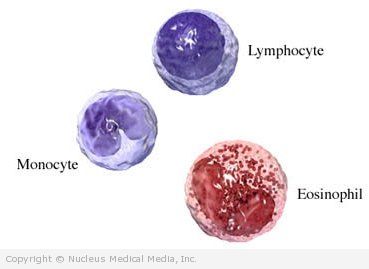Hairy Cell Leukemia
(HCL; Leukemic Reticuloendotheliosis)
Hairy cell leukemia – Definition
Hairy cell leukemia (HCL) is a rare form of cancer. It involves white blood cells called B lymphocytes. White blood cells protect the body from infection. HCL gets its name from the tiny hair-like projections that protrude from the surface of these cancer cells. Illness results from the accumulation of these cancer cells in the bone marrow and spleen.
Hairy cell leukemia – Causes
The exact cause of HCL is unknown.
Hairy cell leukemia – Risk Factors
HCL occurs more often in men. It also occurs more often in people over the age of 50.
Hairy cell leukemia – Symptoms
HCL usually develops slowly over time. Early on, there may not be any symptoms. The cancer cells eventually overgrow the bone marrow. This affects the growth of normal cells (eg, red blood cells and platelets) causing symptoms like:
- Anemia (low levels of red blood cells)
- Bleeding (low platelet levels)
Other symptoms may include:
- Enlarged spleen
- Enlarged liver
- Recurrent infections (often with a fever)
- Easy bruising
- Night sweats
- Swollen lymph nodes
Hairy cell leukemia – Diagnosis
The doctor will ask about your symptoms and medical history. A physical exam will be done. Tests may include:
- Blood tests
- Bone marrow biopsy
- CT scan
Hairy cell leukemia – Treatment
HCL is a slow-growing cancer. It does not require aggressive treatment early on. As HCL progresses, treatment may include:
- Surgery — A splenectomy may need to be done to remove an enlarged spleen.
- Chemotherapy — This is the use of drugs to kill cancer cells. It may be given in many forms. This includes pill, injection, and via a catheter. The drugs enter the bloodstream and travel through the body.
- Immunotherapy — Drugs (eg, interleukin-2, interferon) are used to help boost the immune system to better fight and destroy cancer cells.
- Bone marrow transplant — Bone marrow is destroyed with high doses of chemotherapy and/or radiation therapy. The bone marrow is then replaced with healthy bone marrow from a donor.
- Blood transfusion — A blood transfusion may be done to treat anemia.
- Antibiotics or other medicines to fight infection
Hairy cell leukemia – Prevention
There are no guidelines for preventing HCL.

